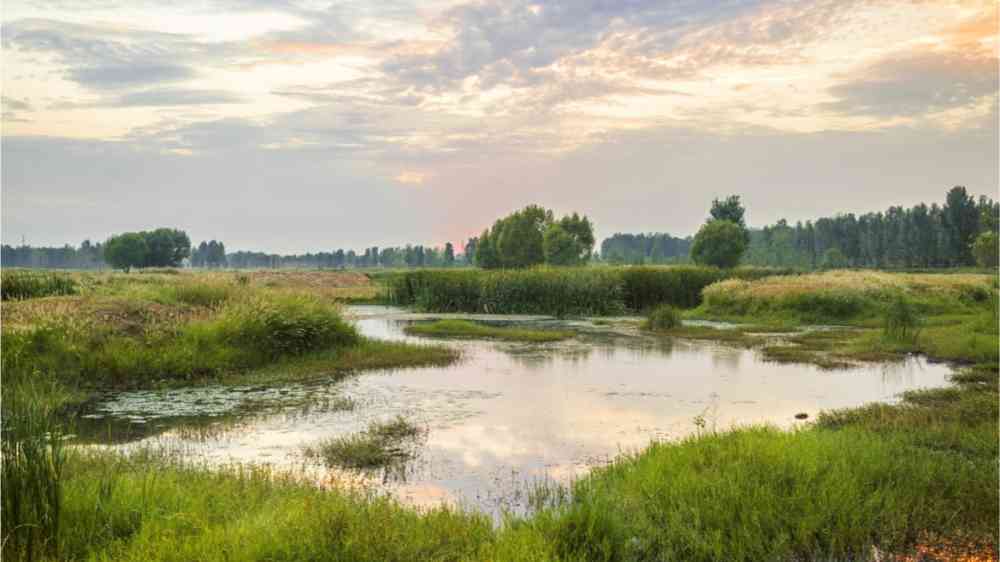By Wallace Mawire
Wetlands across Zimbabwe are coming back to life, thanks to the United Nations Development Programme (UNDP) Zimbabwe’s commitment to harnessing nature-based solutions that protect biodiversity, restore degraded ecosystems, and empower local communities.
From the forests of Mbire to the plains of Binga and the urban wetlands of Harare, UNDP’s initiatives are demonstrating how “wetlands are not wastelands” but are are engines of resilience, livelihoods, and climate adaptation.
Key results achieved by the initiative include supporting 1,206 beekeepers which includes 723 men and 483 women and two honey processing centres completed in 2022, 4,371 kg of honey harvested in the first 2021 flow season, 264,460 trees planted across approximately 149 hectares, supported by 56,000 seedlings in community nurseries.
Other achievements are at Monavale Vlei wetland in Harare where 120+ indigenous wetland plant species have been reintroduced and 230+ bird species recorded, Binga Masibinta Wetland where 13 hectares protected and rehabilitated and a 1,895-seedling nursery established.
The initiative is a recipient of two national environmental awards in 2024.
Another key achievement is at Midlands in Shurugwi and Zvishavane where nine wetlands of 237 hectares have been protected.
Also 11 solar-powered boreholes have been installed, benefiting over 2,200 people, which is 63% women.
“Wetlands are buzzing with potential. The United Nations Development Programme (UNDP) is supporting community beekeeping in Mbire District, a venture that safeguards ecosystems and promotes sustainable jobs and resilient livelihoods,” said Ms. Chitape, Zimbabwe Apiculture Trust.
UNDP’s beekeeping programme integrates conservation with livelihoods—restoring ecosystems while generating income for rural communities. Beehives have even been used as “bio-fences” along elephant corridors, reducing human-wildlife conflict while reinforcing environmental stewardship.
Tree planting and wetland restoration have become cornerstones of UNDP’s work.
In partnership with communities and the Government of Zimbabwe, reforestation efforts in Hurungwe, Mbire, and Muzarabani are reversing degradation and strengthening ecosystem services.
“Tree by tree, wetland landscapes are coming back to life,” said Ambassador T.T. Chifamba, President of Ramsar COP15 and Secretary for Environment, Climate and Wildlife. “Local youth groups, with support from organizations such as UNDP, are leading reforestation drives that safeguard rivers and restore biodiversity.”
“Healthy wetlands mean healthy communities. From honey harvests to restored forests, nature-based solutions are our best defence against climate shocks,” said Dr. Ayodele Odusola, UNDP Zimbabwe Resident Representative.
At Monavale Vlei, one of Zimbabwe’s flagship urban wetlands, more than 120 indigenous plant species have been reintroduced and over 230 bird species recorded since restoration began in 2008 with support from UNDP and the Global Environment Facility (GEF).
Meanwhile, the Southern Africa Ramsar Regional Initiative (SARRI) launched at Ramsar COP15 in Victoria Falls—will enhance regional cooperation on wetland conservation, supported by UNDP and other development partners.
UNDP remains committed to supporting the Government of Zimbabwe and regional partners in implementing the Victoria Falls Declaration and operationalizing SARRI. Together, these efforts aim to ensure that wetlands continue to store carbon, filter water, protect biodiversity, and sustain livelihoods across Southern Africa.
“When we invest in nature, nature invests back in us,” said Dr. Odusola. “Wetlands are life—and UNDP will continue to ensure these ecosystems sustain both people and the planet well into the future.”
